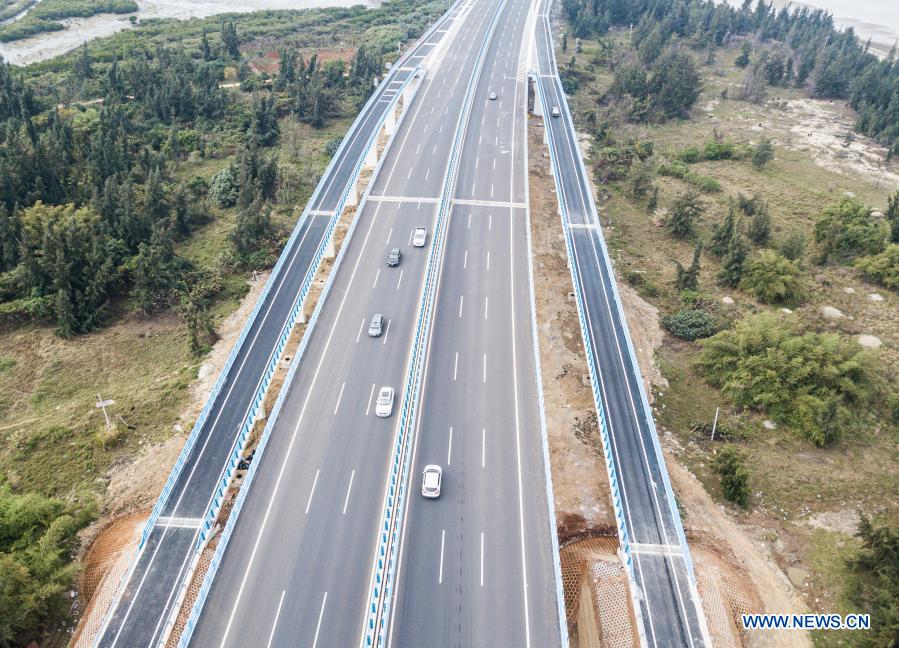


Aerial photo taken on Feb. 6, 2021 shows Haiwen Bridge and Haiwen Bridge-Beigang Island ramp bridge in Haikou, south China's Hainan Province. The ramp project recently opened to traffic. It connects Haiwen Bridge with Beigang Island, marking the end of the days when residents on the island could only travel outside by ferryboat. (Xinhua/Pu Xiaoxu)
HAIKOU, March 1 (Xinhua) -- China's southern island province of Hainan plans to add 25,000 new energy vehicles (NEVs) this year in its latest effort to build a national pilot zone for ecological conservation.
All new buses and government vehicles including those slated to be replaced this year must use new energy, except for special use vehicles, noted a plan recently released by the provincial government.
Over 80 percent of the taxis to be added or replaced this year must also be NEVs, the plan added.
Hainan plans to build 10,000 charging stations for electric vehicles this year and continue to subsidize the private purchase of NEVs.
The scenic island province has been promoting the use of clean energy vehicles, aiming to completely phase out the sales of conventional fuel-based vehicles by 2030.
Hainan had more than 64,000 NEVs by the end of 2020, accounting for 4.2 percent of the province's total number of vehicles, ranking fourth in the country, according to the provincial department of industry and information technology.

 Award-winning photos show poverty reduction achievements in NE China's Jilin province
Award-winning photos show poverty reduction achievements in NE China's Jilin province People dance to greet advent of New Year in Ameiqituo Town, Guizhou
People dance to greet advent of New Year in Ameiqituo Town, Guizhou Fire brigade in Shanghai holds group wedding
Fire brigade in Shanghai holds group wedding Tourists enjoy ice sculptures in Datan Town, north China
Tourists enjoy ice sculptures in Datan Town, north China Sunset scenery of Dayan Pagoda in Xi'an
Sunset scenery of Dayan Pagoda in Xi'an Tourists have fun at scenic spot in Nanlong Town, NW China
Tourists have fun at scenic spot in Nanlong Town, NW China Harbin attracts tourists by making best use of ice in winter
Harbin attracts tourists by making best use of ice in winter In pics: FIS Alpine Ski Women's World Cup Slalom
In pics: FIS Alpine Ski Women's World Cup Slalom Black-necked cranes rest at reservoir in Lhunzhub County, Lhasa
Black-necked cranes rest at reservoir in Lhunzhub County, Lhasa China's FAST telescope will be available to foreign scientists in April
China's FAST telescope will be available to foreign scientists in April